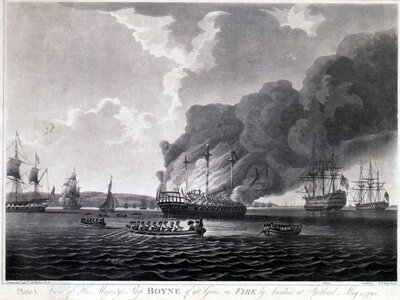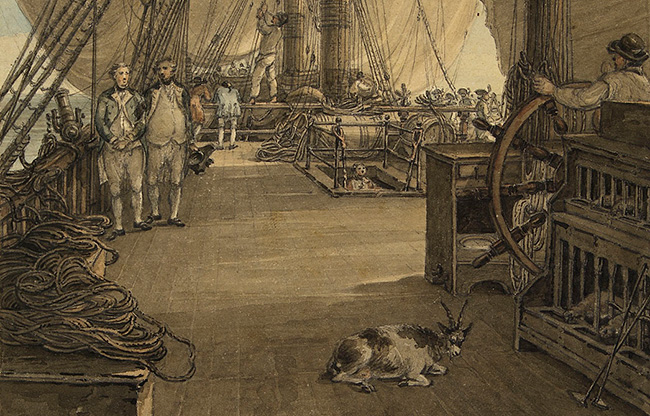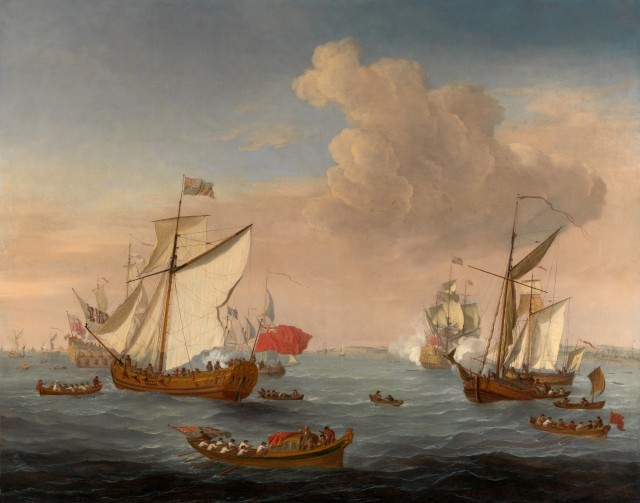If we take a look at the Sherborne (1763)
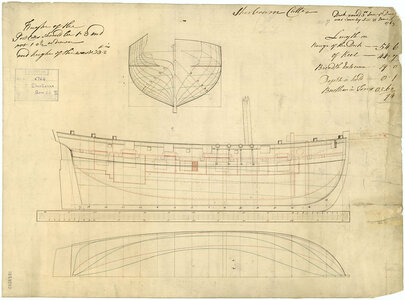
Scale: 1:48. Plan showing the body plan, sheer lines with inboard detail, and longitudinal half-breadth for building Sherborne (1763), a single-masted 6-gun Armed Cutter at Woolwich Dockyard, based on the lines of the purchased Armed Cutter Pitt (1763). Note that the deck, waist and windlass were altered.
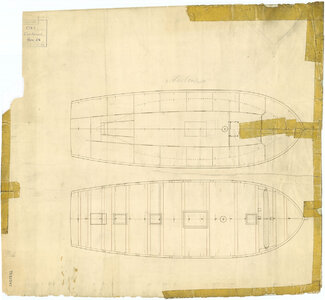
Scale: 1:48. Plan showing the hold with bulkhead arrangements, and deck plan for building Sherborne (1763), a single-masted 6-gun Armed Cutter at Woolwich Dockyard, based on the lines of the purchased Armed Cutter Pitt (1763).
 collections.rmg.co.uk
collections.rmg.co.uk
She had also this chasing gun port, but definitly no possibility to move a gun forward. Also there was no possibility to install lids
All together she had 10 gunports, but definitely was only armed with 6 british 3-pounder guns and swifel guns
Jotika has a good kit of this Sherborne (1763) cutter in scale 1:64 - Jotika is mentioning 8-gun cutter and also the kit contents 8 guns (which was not correct)
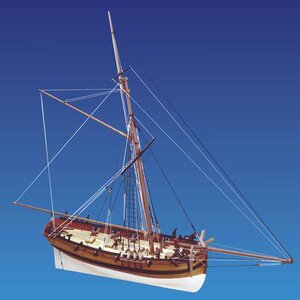
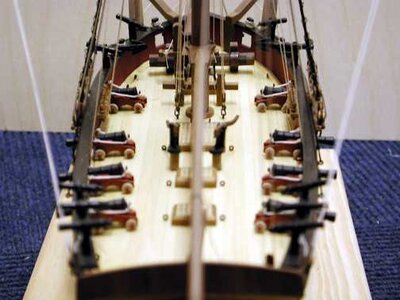
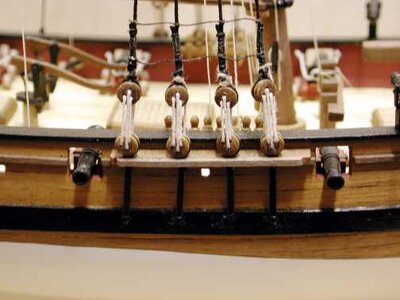

Scale: 1:48. Plan showing the body plan, sheer lines with inboard detail, and longitudinal half-breadth for building Sherborne (1763), a single-masted 6-gun Armed Cutter at Woolwich Dockyard, based on the lines of the purchased Armed Cutter Pitt (1763). Note that the deck, waist and windlass were altered.

Scale: 1:48. Plan showing the hold with bulkhead arrangements, and deck plan for building Sherborne (1763), a single-masted 6-gun Armed Cutter at Woolwich Dockyard, based on the lines of the purchased Armed Cutter Pitt (1763).
Sherborne (1763) | Royal Museums Greenwich
She had also this chasing gun port, but definitly no possibility to move a gun forward. Also there was no possibility to install lids
All together she had 10 gunports, but definitely was only armed with 6 british 3-pounder guns and swifel guns
British cutter 'Sherborne' (1763)
British cutter 'Sherborne' (1763). Dates of service, name changes, previous and next incarnations, dimensions, armament, commanders, officers and crewmen, actions, battles, sources
threedecks.org
Jotika has a good kit of this Sherborne (1763) cutter in scale 1:64 - Jotika is mentioning 8-gun cutter and also the kit contents 8 guns (which was not correct)



JoTiKa Ltd. ~ Nelsons Navy Page 6, H.M.Cutter Sherbourne.
JoTiKa Ltd. manufacturer and distributor of classic scale model kits from Caldercraft, Mini Fleet, Nelsons Navy, Heritage series - including The Mary Rose - Krick, HFM Marine and many more.
www.jotika-ltd.com



